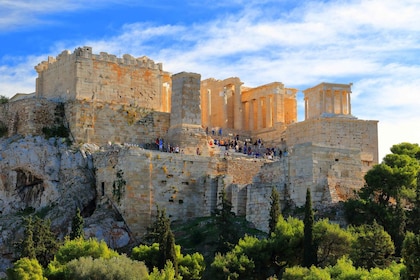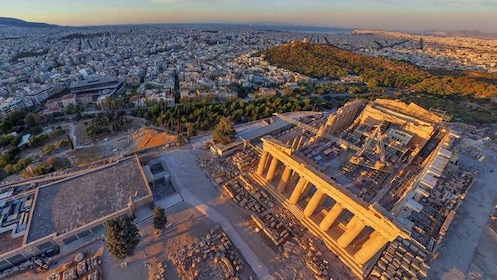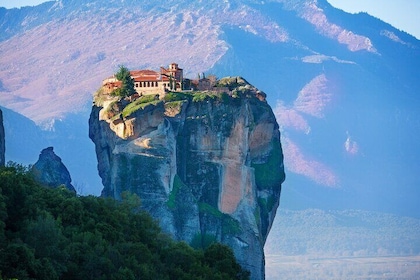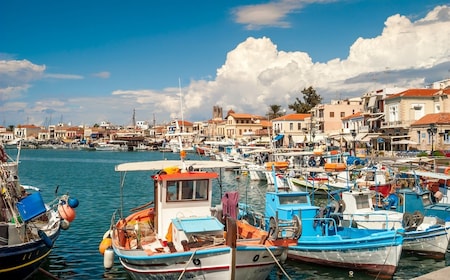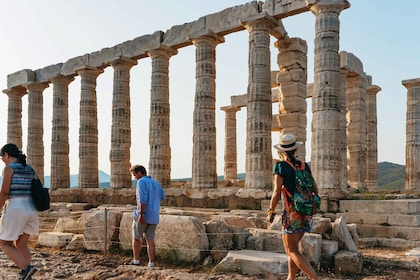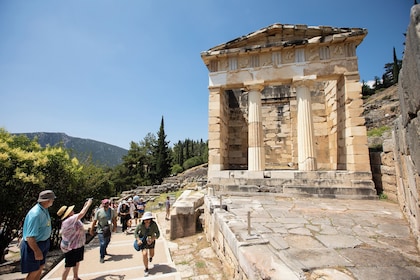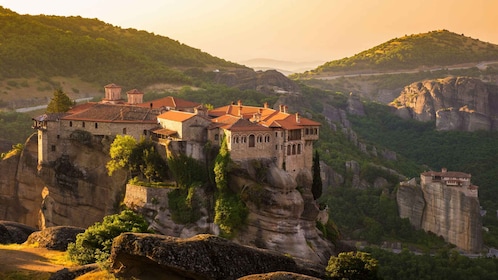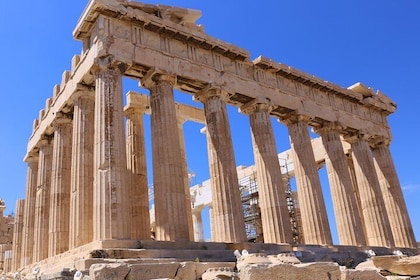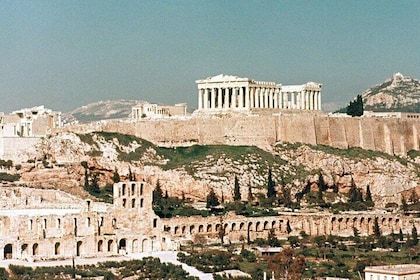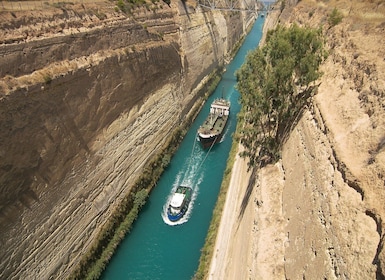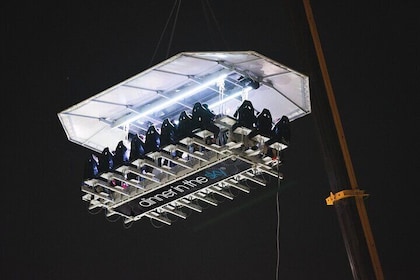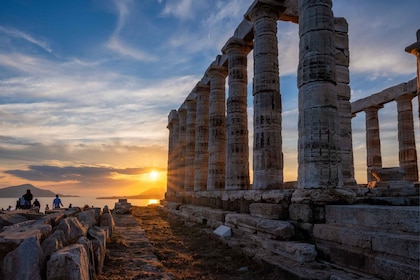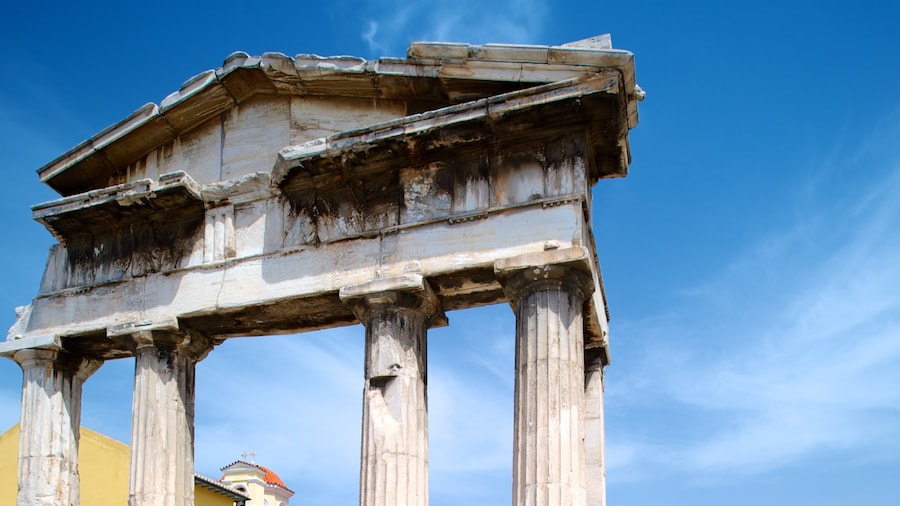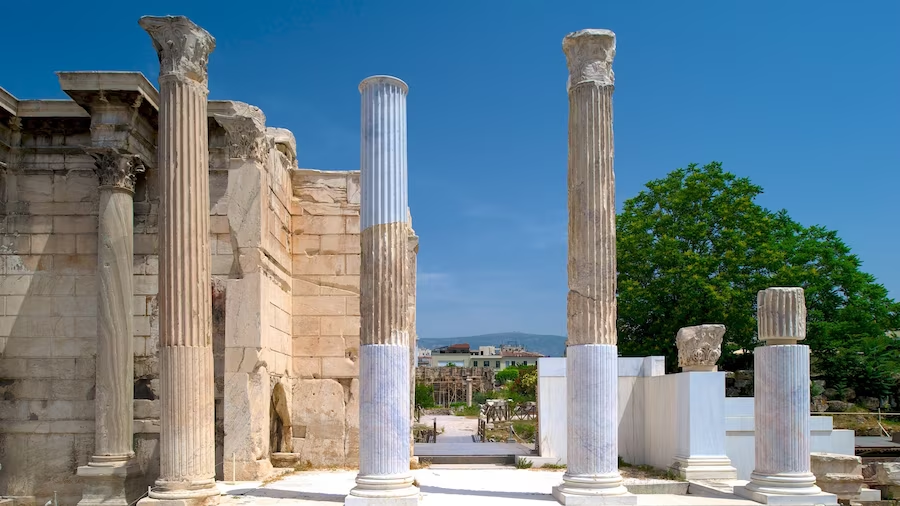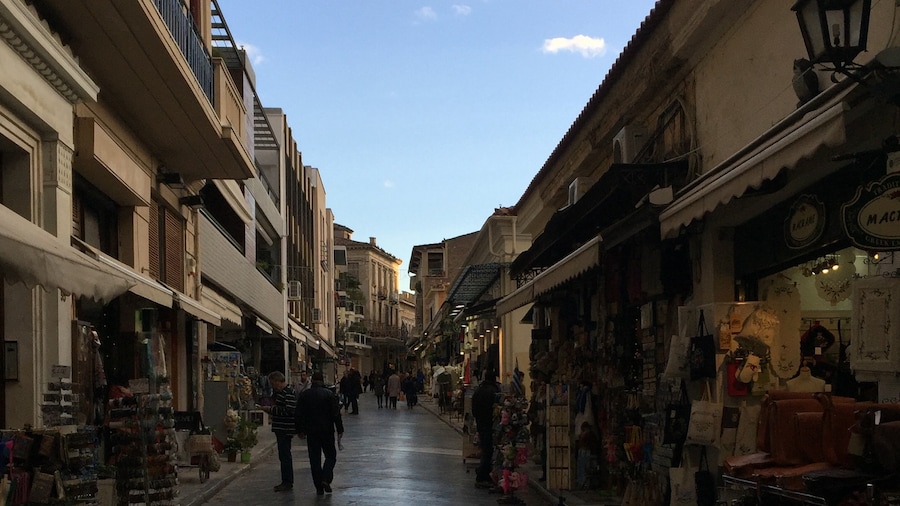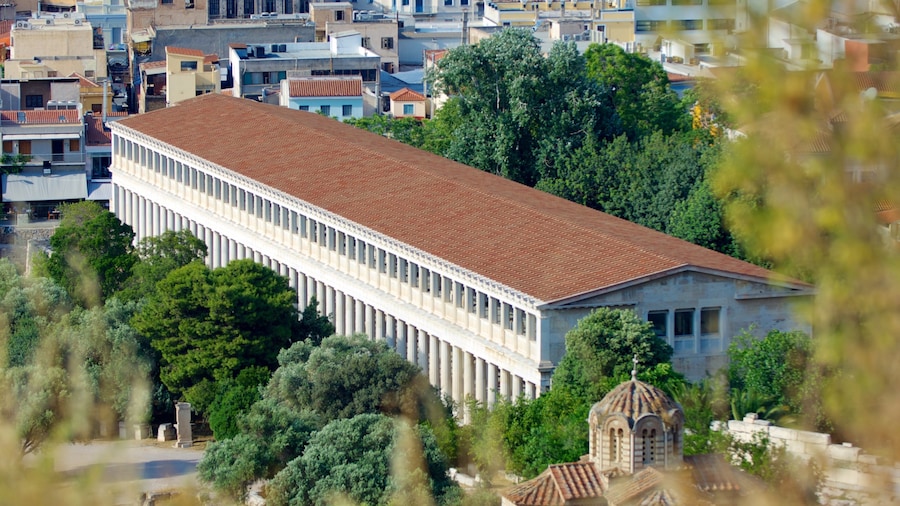See friezes of whimsical wind gods and architectural details way ahead of the time at one of Greece’s best-preserved monuments from ancient times.
The Tower of the Winds was constructed in the 1st century B.C. by the astronomer Andronicus of Kyrrhos. The white marble monument, located in the Roman Agora on the western slope of the Acropolis, has had a variety of functions since ancient times. It’s been used as a church, water clock, sundial and compass over the ages. Historians will appreciate that this was once a Byzantine church. During Turkish rule, Sufi whirling dervishes performed their mystical dance around this spiritual tower.
Architecture enthusiasts will marvel at the ingenious octagonal design of this 39-foot-tall (12 metres) clock tower. Each side represents a point of the compass. Around the top there are reliefs of eight floating figures depicting the eight winds, or I Aerides (the Windy Ones). You’ll see that the north wind, Boreas, is blowing on a conch, and the west wind, Zephyros, is scattering blossoms.
Beneath each representation of the wind deities are the faded rays of an ancient sundial. Originally, there was a bronze Triton weather vane, holding a metal rod in his hand, that revolved atop the tower. Step inside to see a turning device, once powered by water brought down from the Acropolis, that was used to show the passing hours.
When you’re ready to rest your feet, relax in the park outside the Acropolis. You can buy lunch at the kiosk here, or bring along your own food as the kiosk is quite expensive. If you would like to hire a guide, head over to the ticket booth. There are guide books about the Acropolis for sale as well, so it is easy to take a self guided tour if you prefer.
The Roman Agora in the city centre and is accessible by public transportation. The cost of admission is included in the entry fee for the Acropolis. The site is open daily.





